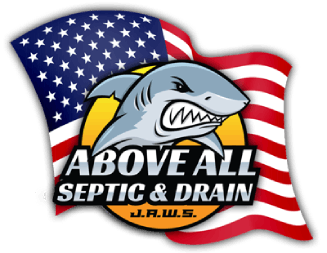Catch basins (also known as french drains, storm drains, parking lot drains) are concrete boxes or cylinders that trap solid waste and allow water to drain into the ground through a drain line. Parking lot flooding is caused by drains being blocked with solid waste. When the drains fill with sand and debris the storm water cannot enter the drainage portion of the system and permeate into the ground. Catch basins either dump into a perforated drainage line (plastic or stainless steel) or a soakage pit.
We have been cleaning South Florida catch basins and storm drains for years. We have the equipment to clean every basin and specialty hydro jetting equipment to clean every line.
Signs Your Storm Drains Need Cleaning
- Standing water in parking lots or driveways after rain
- Slow drainage during moderate rainfall events
- Overflow and flooding during heavy storms
- Visible debris, leaves, or sediment in catch basins
- Unpleasant odors from storm drain openings
- Mosquito breeding in stagnant water areas
- Erosion around drain structures
- Water backing up from storm drain outlets
Types of Storm Drainage Systems
- Traditional catch basins with sediment traps
- Trench drains for linear water collection
- French drains for subsurface water management
- Dry wells and infiltration systems
- Retention and detention pond drainage
- Parking lot and commercial property systems
- Residential driveway and yard drainage
- Municipal street and roadway storm drains
Common Storm Drain Problems and Solutions
- Sand and sediment accumulation from construction sites
- Leaf and organic debris buildup during storm seasons
- Trash and litter blocking drain openings
- Root intrusion in underground drainage lines
- Pipe bellies and improper slope causing standing water
- Broken or damaged catch basin grates and covers
- Erosion and structural damage to drainage components
- Oil and chemical contamination requiring specialized cleanup
Professional Storm Drain Cleaning Process
- Initial assessment and system evaluation
- Debris removal and catch basin pumping
- High-pressure hydro-jetting of drainage lines
- Video inspection to assess pipe condition
- Sediment trap cleaning and restoration
- Grate and cover cleaning and adjustment
- System testing and flow verification
- Documentation and maintenance recommendations
Seasonal Storm Preparation Services
- Pre-hurricane season comprehensive system cleaning
- Post-storm debris removal and damage assessment
- Heavy rain season capacity optimization
- Dry season maintenance and inspection scheduling
- Hurricane debris clearing and emergency response
- Tourist season preparation for increased runoff
- Construction season debris management
- Algae and mosquito control during wet periods
Commercial Property Storm Water Management
- Shopping center and mall parking lot drainage
- Office complex and business park systems
- Restaurant and retail property grease management
- Construction site temporary drainage solutions
- Industrial facility contaminated runoff management
- Hospital and institutional property drainage
- School and university campus storm systems
- Multi-family residential complex drainage
Emergency Storm Drain Services
- 24/7 emergency response for flooding situations
- Hurricane and severe weather emergency clearing
- Holiday and weekend availability for urgent drainage issues
- Rapid response for business interruption situations
- Emergency pumping and temporary drainage solutions
- Post-storm cleanup and system restoration
- Insurance claim support and documentation
- Coordination with municipal emergency services
Preventive Maintenance Programs
Develop ongoing maintenance strategies:
- Quarterly inspection and cleaning schedules
- Annual comprehensive system evaluation
- Seasonal debris removal programs
- Grate and cover maintenance contracts
- Early problem detection and intervention
- Cost-effective maintenance vs. emergency repair
- Multi-property management coordination
- Customized maintenance plans by property type
Specialized Equipment and Technology
- High-capacity vacuum trucks for debris removal
- Hydro-jetting equipment for pipe cleaning
- Video inspection systems for condition assessment
- Crane and lifting equipment for heavy debris
- Environmental containment systems
- Water recycling and filtration equipment
- GPS mapping and documentation systems
- Emergency response equipment and supplies
Property Type Specific Services
- Residential driveway and yard drainage solutions
- Commercial parking lot comprehensive management
- Industrial facility specialized cleaning requirements
- Municipal contract services and coordination
- HOA and property management programs
- Construction site temporary and permanent drainage
- Agricultural and rural property drainage systems
- Coastal property saltwater intrusion management

